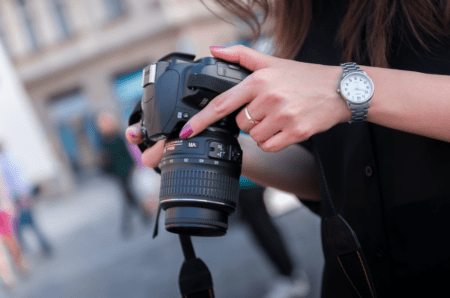
Photography is an art in itself. Like any art, you need to approach it with a more open and creative mindset. You need to feel the essence of the scene you want to capture. However, in the photography community, you’ll find a myriad of groups including both the amateur and professional demographic.
With their experience (or lack thereof), they have seemed to formulate a set of rules and best practices that increase the chances of getting better results. Unfortunately, if you are looking for some secret tips that can make the pictures you take look miles better than before, then you’ll only end up digging myths and misconceptions.
Let’s look at some of the most common photography myths and see if we can debunk them.
1. I Need Good Weather Conditions for Good Photos
In photography, lighting conditions have a massive impact on how the end photo will end up looking. However, what most photographers don’t understand is that giving up when the weather isn’t clear or sunny blaming poor lighting conditions is like basically saying that they’re not skilled enough to take advantage of the weather.
Good photos can be taken no matter the lighting conditions. There’s always a scene that looks best in certain lighting conditions, you just need to look for it and make the best use of it.
For example, in cloudy weather, you are lighting conditions have low contrast. So take advantage of that and perfect your landscape and portrait snaps.
Similarly, on a clear and sunny day, you can take advantage of silhouettes and shades by contrasting them to the light to capture amazing pictures.
2. The More Frames You Shoot, The More Good Pictures You’ll Have
The origin of this myth is pretty obvious. If you shoot a thousand frames, you’ll end up with a lot more good pictures at the end of the day if you had only shot a hundred frames. However, shooting a lot of pictures doesn’t necessarily translate to shooting a lot of good pictures.
This practice only dulls your skills. You should always have a clear goal whenever your camera’s shutter closes. Randomly shooting pictures hoping a few of them turn out good is bad practice. As such, it’s better if you do the opposite, restrict yourself to taking only 36 pictures a day and try your best to make the most out of your pictures. This will improve your camera skills and you’ll have lesser images to process as well.
3. A Tripod Is Necessary For Photography
While a tripod does add incredible convenience and flair to your photos, becoming dependent on it can cripple your skills as well. As humans, we tend to lean towards anything that can make our work easier. However, in artistic work, relying too much on the convenience of tools can hurt your creativity as well.
As a photographer, you should be well aware of how a tripod works and skilled in getting the most out of it. However, don’t limit yourself to the point that when you don’t have a tripod with you there’s no chance of getting good photos. Be comfortable taking photos only with your camera. Explore new perspectives and make use of walls or rocks to steady your camera. A tripod won’t make you a good photographer, your skills will.
4. Never Use Auto-Mode on Cameras
Professionals indeed use their camera’s manual mode but shunning auto-mode is wrong. Each of these modes has its own strengths and as a photographer, you need to be skilled enough to know what camera mode best suits the current situation. With manual, you have more control and with auto, you have less control but the ability to snap the photo quickly.
5. Post-Processing Is Taking The Easy Way Out
There are a lot of mixed views about image post-processing. The majority shun the idea because it removes the ‘authenticity’ and introduced ‘artificiality’ in the pictures. However, completely disbarring post-processing tools and even completely relying on them isn’t the solution. In fact, using if you flip an image in photoshop, you’ll be able to completely change the perspective. But if you take a poor photo, an image flipper won’t be able to salvage it as well.
So the best thing to do is be skilled at post-processing your images. For instance, you might find yourself googling ‘how to flip an image in photoshop’ but performing an image flip and actually knowing how do you flip an image in photoshop are two separate things. You can do an image flip just by following the instructions but practicing and doing it skillfully is what will get you the desired results.
So take your time and be sure to properly learn to use post-processing tools but don’t rely on them too much.

